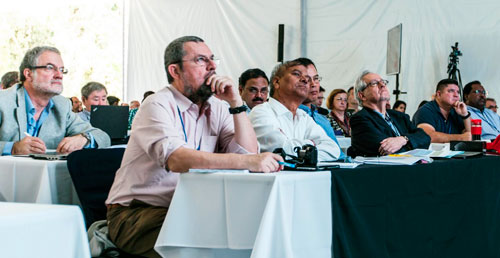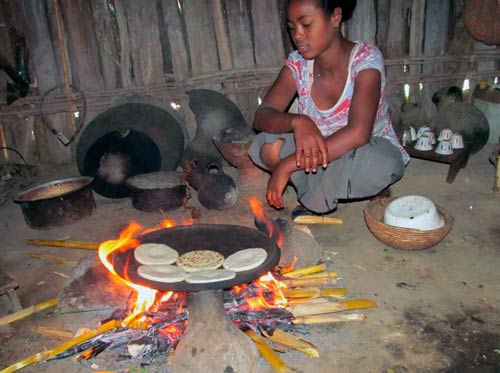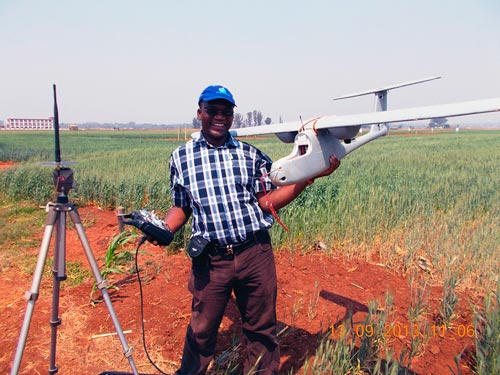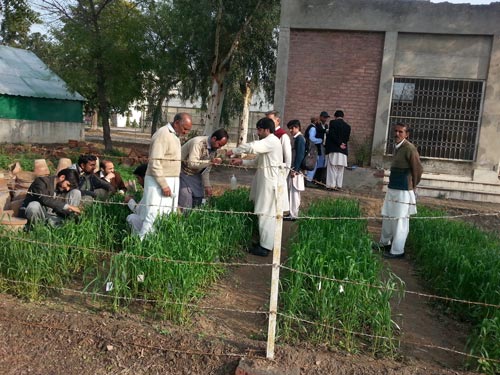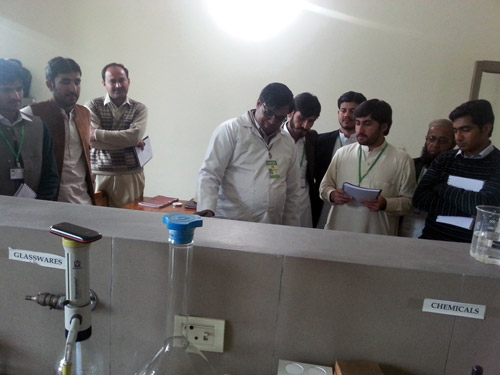Guest blogger from HarvestPlus
Only 20 years ago, the idea that maize could reduce vitamin A deficiency (VAD) would have been summarily dismissed. Agricultural scientists were focused on increasing yields and developing more robust varieties that could withstand the constant assault of new pests and diseases. The idea of making maize and other staple food crops more nutritious by breeding in vitamins and minerals, a process called biofortification, was a novel concept. However, with the launch of HarvestPlus in 2003, a collaborative research partnership was launched to bring together scientists across disciplines in an effort to reduce hidden hunger caused by micronutrient deficiencies. One of the fruits of this partnership were the world’s first “orange” maize varieties rich in vitamin A. This ‘orange’ vitamin A maize has been conventionally bred to provide higher levels of provitamin A carotenoids, a naturally occurring plant pigment also found in many orange foods such as mangoes, carrots and pumpkins, that the body then converts into vitamin A.
I sat down with two of the scientists who have been integral to this global effort: CIMMYT’s Dr. Kevin Pixley, who led the first 10 years of HarvestPlus’ maize biofortification project while heading CIMMYT’s breeding program for vitamin A maize, and Dr. Fabiana Moura, a nutritionist with HarvestPlus who oversees all vitamin A-related research. The question on my mind was: what does it take for scientists to break out of their disciplinary strait jackets and to look at a food with a rich and storied history thorough a different lens?
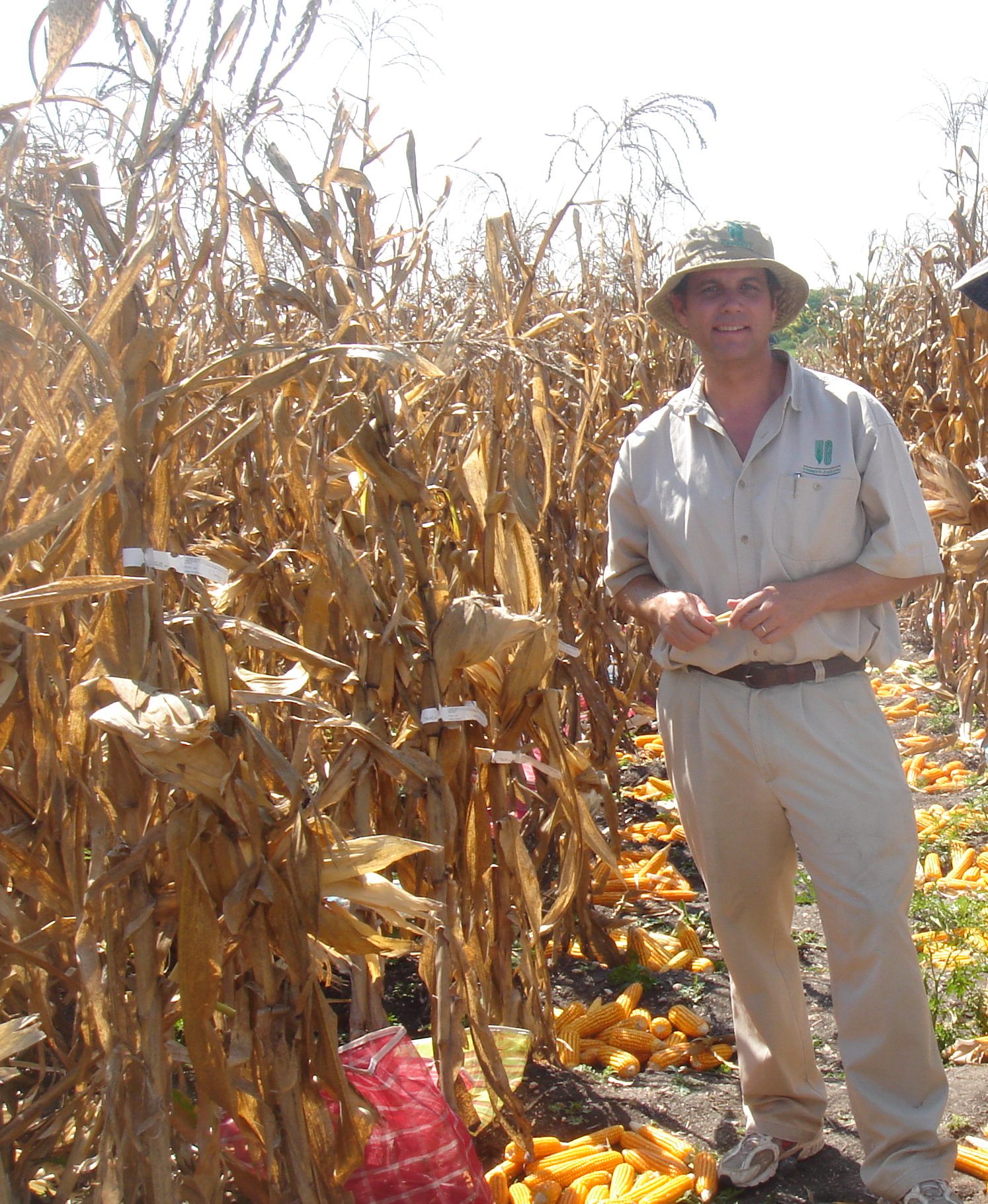 Kevin, where did the idea of making maize more nutritious come from?
Kevin, where did the idea of making maize more nutritious come from?
Nearly a billion people eat maize as a staple food, and many of them are poor and malnourished. Maize is a great source of energy, but its protein is deficient in essential amino acids and crucial minerals and vitamins. Of course, everyone should eat a balanced, healthy diet, but poverty gets in the way. Chronic malnutrition is unacceptably common among some populations that depend heavily on staples such as maize in their diets and can’t afford more nutritious foods. Improving the nutritional quality of maize is a way to improve the health and livelihoods of many maize consumers.
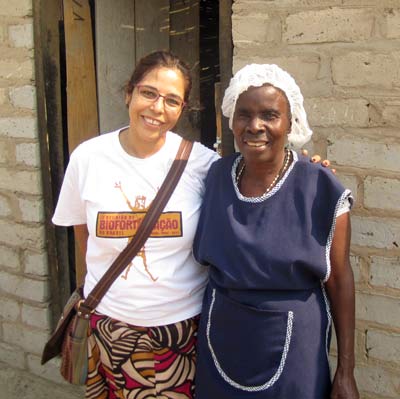 Fabiana, why vitamin A in particular?
Fabiana, why vitamin A in particular?
Vitamin A is essential for good vision, growth, and a healthy immune system. But, 190 million children under 5 and 19 million pregnant women are vitamin A deficient. To combat this, the World Health Organization recommends vitamin A supplementation in infants and children aged 6 months to 5 years, and the capsules are distributed every 6 months. The fix, however, is temporary. The improved vitamin A status lasts less than 2 months before wearing off, failing to cover the 6-month period. It is also not a sustainable strategy, with high costs that can affect its coverage.
Under this scenario, providing vitamin A through a typical diet is a more sustainable way to address the VAD problem. In countries like Zambia where people eat a lot of maize, orange maize could provide half of the daily vitamin A requirement. Safety is another important aspect. The provitamin A in the maize is converted to vitamin A in the body as it is needed. Supplements and fortified foods provide preformed vitamin A that, if ingested in higher doses, could cause toxicity because they accumulate.
Lastly, the orange maize will be eaten by the entire family. Women of childbearing age will enter pregnancy with a better vitamin A status and maintain this level during pregnancy. Newborns will receive the vitamin A from orange maize through their mothers’ breast milk. Everyone wins.
And, Kevin, what was the biggest challenge in breeding orange maize?
The first challenge was finding maize with high levels of provitamin A carotenoids for use in breeding efforts. They are found in a lot of foods but we had not looked in maize before.
We then needed the expertise of biochemists and geneticists to develop essential laboratory methods to precisely and affordably identify the few plants with the highest amounts of these desired carotenoids from among many thousands of plants created each year in the breeding projects at CIMMYT, IITA and elsewhere. As in every applied breeding program, orange maize breeders need to continually monitor, improve and combine dozens of characteristics – high yield, disease resistance, good food processing ability, taste, etc., into new varieties that farmers and consumers will prefer over those that they currently grow and eat. As we speak, CIMMYT, IITA and other maize breeders are working intensely to maintain a full “breeding pipeline” to continually improve upon current successes. Soon, there will be new varieties with 50% more provitamin A than those first commercialized 2-3 years ago. And there are varieties in the pipeline with double the amounts of provitamin A that will improve the nutrition and lives of farmers and consumers in decades to come.
What was the biggest challenge in working with someone from outside of your discipline?
Fabiana: Learning an entirely new vocabulary of OPVs [that’s open pollinated varieties], hybrids, etc. It was like learning a foreign language!
Kevin: My own ignorance about the complexities and importance of diverse disciplines to the success of our team; I’d never worked with nutritionists in plant breeding before. It is great fun and a big challenge to learn about other disciplines, especially human nutrition, food technology and public health, but also biochemistry, economics and even politics. A big challenge for the whole team was learning to trust the other disciplines to do their part of the job, knowing that every chain is only as strong as its weakest link.
Have any assumptions or perspectives that you had about the other discipline changed as a result of working together?
Fabiana: I learned that agriculture also faces some challenges. When planting maize for a feeding trial study I remember asking Kevin if he could assure us that there would not be major issues to deal with. His reply was, “there could be a pest infestation that has not happened for the past 20 years–so we cannot predict what might happen. We have had cases with typhoons that wiped out an entire field.” That was when we decided to have 2 two fields in 2 different provinces planted with vitamin A maize to ensure we would have enough material for the study.
Kevin: I always thought that nutrition was an exact science; I was very wrong! Nutrition is very complex; everything depends on multiple factors. Even the effectiveness of vitamin A maize depends on health status, age, other diet components, and many other factors.
Kevin, what changed about your own work as a result of working with nutritionists?
I had to accept that the goalposts would move. Many scientific assumptions fell away and were replaced with new ones. It continues to be an eye-opening experience because important discoveries are being made every year. There are many important factors to consider, e.g. which provitamin A carotenoids are most helpful nutritionally, which conversion factors must be applied when “translating” how much provitamin A content in the maize grain is needed to be useful for the consumer, how much of the provitamin A in the grain will be lost (degraded) when the maize is cooked, and more! These factors determine the amount and forms of provitamin A that we have to breed into the maize in order to improve nutrition when people cook and eat the crop.
My experiences working with nutritionists have broadened my vision about the role of plant breeding in agriculture for nutrition, health and improved livelihoods.
Fabiana, what evidence do we have that this works?
We know that the provitamin A from maize is efficiently absorbed and converted into vitamin A in the body. One study conducted in a rural setting in Africa showed that the vitamin A body stores of 5-7 year-old children improved when they ate orange maize—similar to the effect of vitamin A supplements. We also have some preliminary data demonstrating that children who ate orange maize for 6 months experienced improved capacity of the eye to adjust to dim light. That indicates an improvement in night vision, a function dependent on adequate levels of vitamin A in the body. Another study is looking at the impact of orange maize on the vitamin A status of lactating mothers and their breastfed children. In particular, we will learn how much the vitamin A contribution to the breastfed child will come through the breast milk of mothers who are fed the orange maize and how much will come from the orange maize itself that is fed directly to the children (only those above 6 months of age will be fed orange maize). All the studies cited above are using innovative and cutting edge technology applied in rural settings in Africa. They have been conducted in over 50 feeding sites and greatly facilitated by local people like Mrs. Donata Kalunga (standing next to me in the picture), who offered her school for disabled children as a kitchen and site for training and clinical assessment for the study. I’m optimistic that in the next year or two when we get the full results of ongoing studies, we will find that they reinforce the positive outcomes we’ve found so far.
————————————————————–
References:
WHO. Global prevalence of vitamin A deficiency in populations at risk 1995-2005. WHO Global Database on vitamin A Deficiency 2009.
WHO. Guideline: Vitamin A supplementation in infants and children 6-59 months of age. Geneva, World Health Organization, 2011.
Gannon et al. 2014. Biofortified orange maize is as efficacious as a vitamin A supplement in Zambian children even in the presence of high liver reserves of vitamin A: A community-based, randomized-placebo-controlled trial.
Go back to A Grain a Day
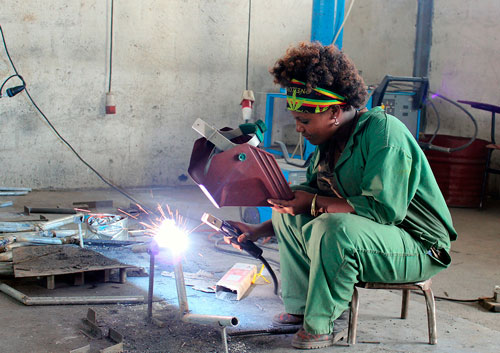
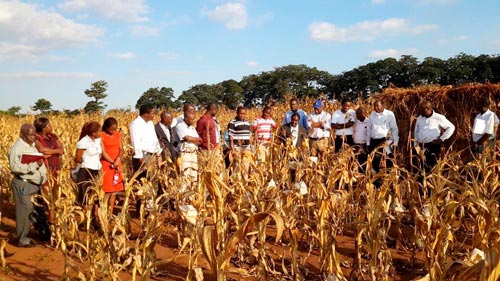
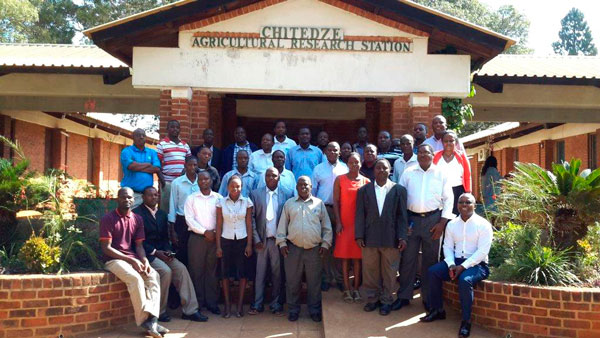

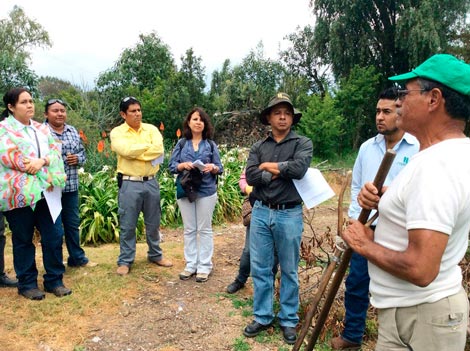
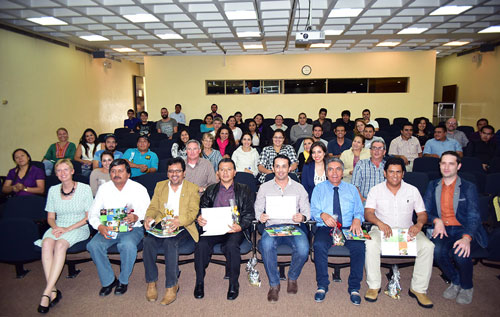
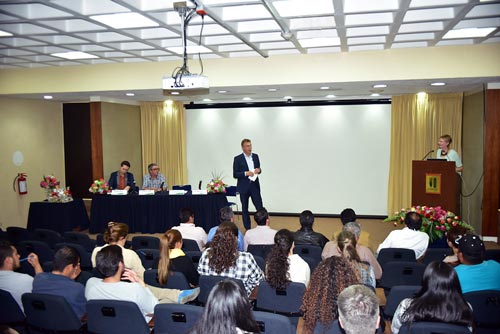

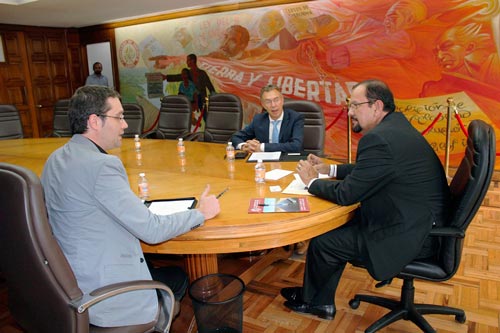
 Kevin, where did the idea of making maize more nutritious come from?
Kevin, where did the idea of making maize more nutritious come from? Fabiana, why vitamin A in particular?
Fabiana, why vitamin A in particular?